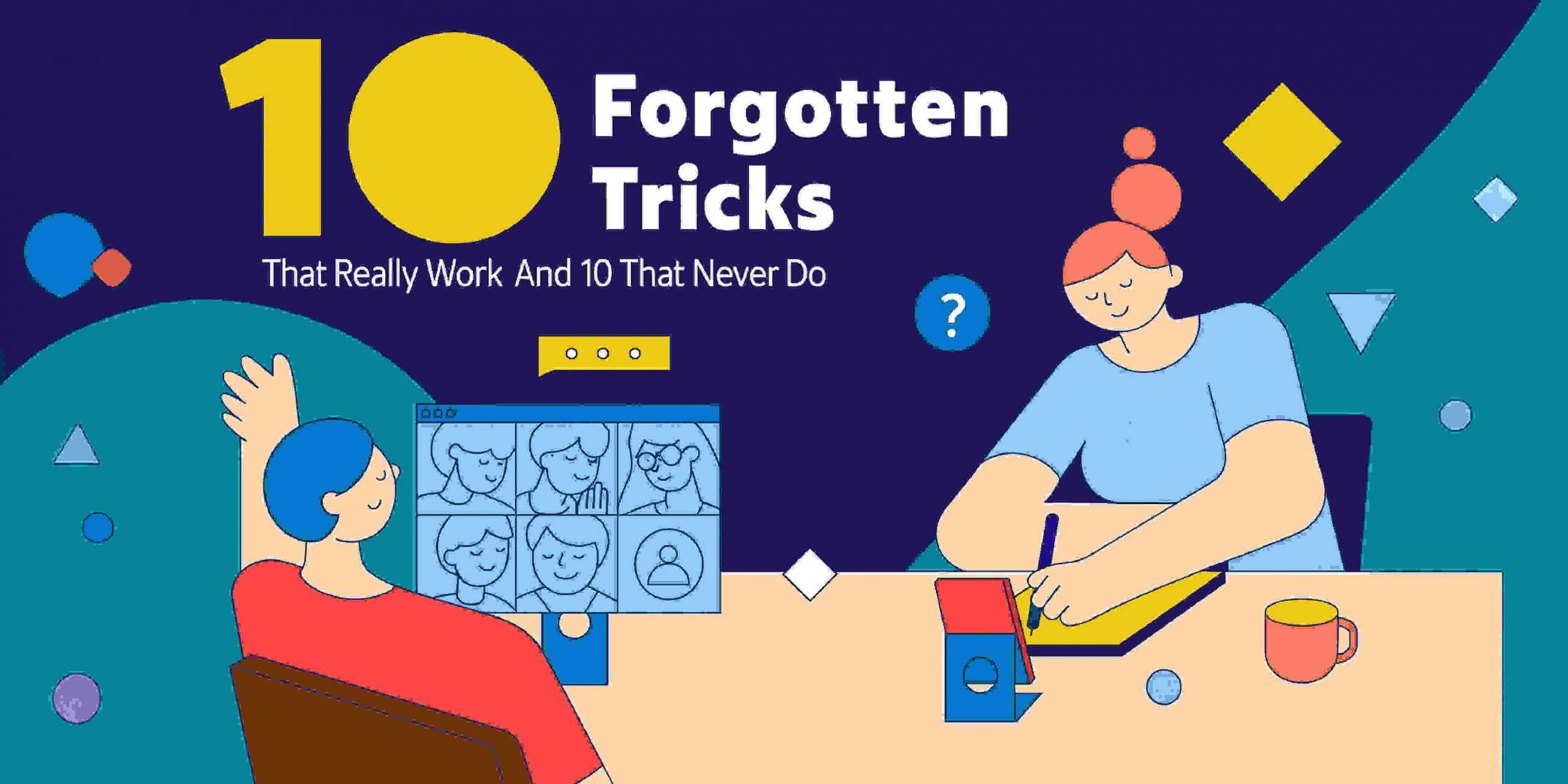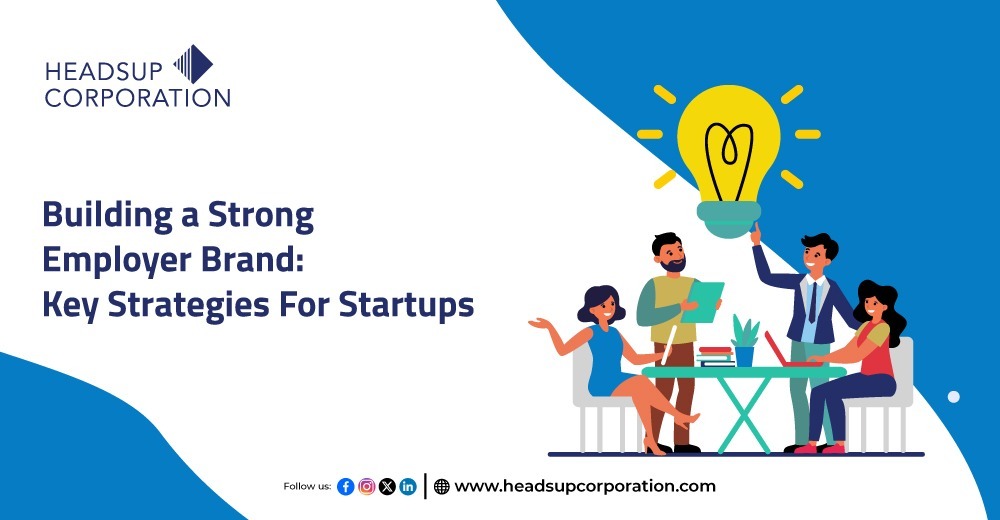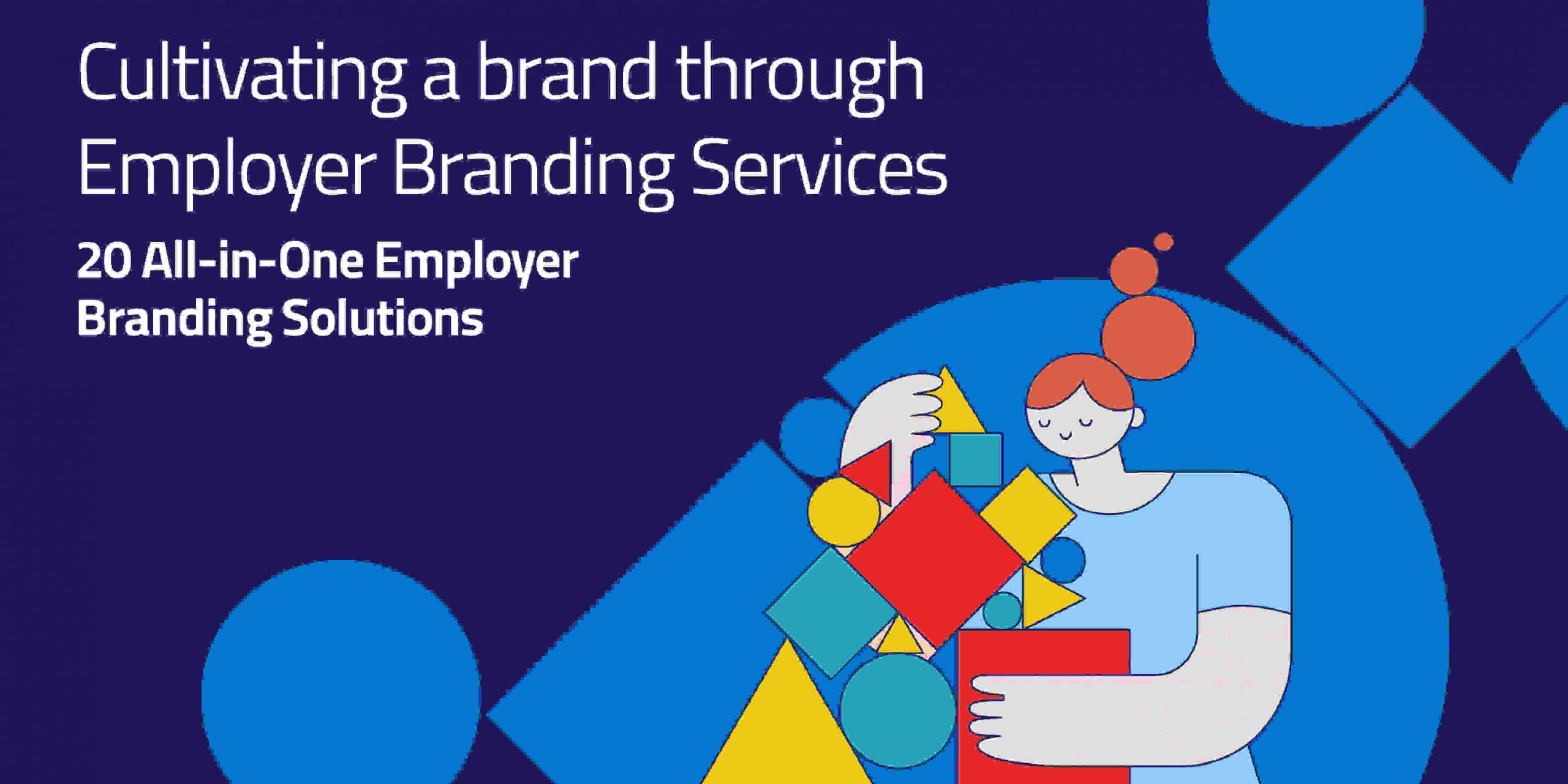
Employer Branding Value Proposition: 10 Forgotten Tricks That Really Work ( And 10 That Never Do)
Universum Global is all set to give away the title of the most attractive employers award of 2022 this November. The list has all the great names ranging from Samsung to Microsoft and others from nineteen of the largest economies. As you go through the list, you will see why these brands are chosen. These names make it to the most sought-after list of employer branding on campus and are often seen on the proverbial billboards, advertisements, and our social media feeds.
However, is it merely about their presence all over?
Or does their work alone speak for what they represent?
Well, the real wizard here is the employer value proposition (or EVP). Our stylistics have changed regarding portraying the company standards and what they seek regarding talent. Contemporary brands need contemporary solutions for all their visibility and marketing needs. Hence, the age-old plan of sheer and blatant publicity folders. The company needs a solid employer branding value proposition strategy to keep up with the cutthroat competition and bizarre marketing trends.
Compared to companies that use their EVP less effectively, Universum research has shown that companies that use their employee value proposition most efficiently are five times more in demand. Their employees are exceptionally engrossed and twice as likely to report achieving economic health way above their contemporaries. They continue by saying that the most successful companies customize their EVP strategy, taking a hint from market trends.
Now, you understand that customization of your brand is quite important. It gives your brand an upper edge over the competition. Customizing EVP means your company’s branding and communications are authentic, distinctive, and pertinent to primary target audiences. By doing so, you are also encouraging the brilliant individuals you want to recruit, develop, and manage. This also leads to building a favorable perception and associative links with your employer’s brand and several recruitment drives.
10 Tricks That Make Your EVP Shine Better and Attract Better Campus Crowd
Having good employer branding on campus still remains secondary. Having the right employer value proposition strategy is what counts. As an organization, the onus is on you to generate the right policies, engagement programs, and several drives that give you the optimum engagement. Still, a little help won’t hurt. Some minor tricks have worked for many brands in the past. Take a look at 10 such tricks that if employed properly could “proposition” your brand into the big leagues.
Take a look!
1. Headline That Speaks Volumes
“Join Us, Be You!” — Apple
“How we care for Googlers?” — Google
“Haven’t reached your full potential yet? Neither have we. There’s more to be made” — Hershey’s
Don’t be confused! We were just showing you some of these high-value brands’ best taglines.
What were the key takeaways from each of these?
If you would notice, they all are polar opposites of each other yet share competition in terms of a great employer branding value proposition.
These companies ensure that their brand brings to the plate through their taglines. For instance, Apple wants to optimize new talent, Google is playing with its well-established brand name, and Hershey’s is looking for the right kind of new talent. You will see how carefully they fit each of these distinct agendas in their headlines. Your brand too needs something similar. Find out what is a prerequisite for your brand, optimize it and use it.
2. Standard Length of Your EVP
For deciding the length of your Employer Value Proposition, there is no touchstone method. It depends on how you would want to put your point across. Using the same examples as above, Google has a whole pamphlet-like downloadable mission and vision statement, while Hershey’s uses two-page infographics to sell their perks. You can also do a little bit of research to come up with your own plan. Here is a little something that you should keep in mind while deciding the content though:
- Alignment with the company’s vision and mission
- Crisp and concise content
- Transparency in terms of policies
- Friendly and easy-to-grasp ideas
3. Using Visuals and the Right Audio
Using audio-visual aids serves many purposes when it comes to displaying company values and important pointers. It is psychologically proven that semantics are important for all marketing purposes. Using the right colour scheme, appropriate visuals, and a little bit of quirky representation attracts a great audience and promotes visibility. Your employer’s branding value proposition needs to be eye-catching to reach the targeted talent pool. It should have an articulate design feature along with the correct information to help your content reach the right audience.
4. Company Culture
It is an all-encompassing umbrella phrase. It deals with the cultural fabric and the policies that promote and boost them. This also includes healthier work practices, work culture, work environment, conversations, and much more. You don’t really have to put it all out there in your memo. But, using this information, you can indeed build a lucrative offer that invites young talents who wish to work at a healthier workplace.
Showcasing your modus operandi is also a great way to reach out to the talent who wishes to work in a particular niche. Hence, put your best foot forward in the most literal sense and allow the new talent to follow those footprints. In the long run, this practice also generates a sense of transparency.
5. Growth and Training for Employer Branding on Campus
Young talents can be fickle-minded in terms of catching up with the changing trends. With every quarter’s end, we see the latest tech or policy emerging out of the marketplace. How does your company fit into this module and therefore become eminent? Let your people know what you offer to brush up on their existing talent and hone new ones.
This is one sphere, where blatant publicity and advertisement work the best. Employ great marketing ideas and let them know what you have on deck for the next quarter and the superseding one and beyond. By having a clear roadmap of the training and talent development programs within your office, you are improving your talent acquisition and retention.
6. Presenting the Right Perks to the Right Audience
What does an employee look for in a company’s home profile? The first aspect that a job-seeker looks for is the monetary benefit followed by the non-monetary perks. However, just adding a few statistics in their crude form is not what works best here. The talent pool is all up for research, comparing, and then coming up with a rational plan. So, being blatant about your facts and figures can backfire.
The best solution to this is having an exciting read on what you have to offer in monetary, non-monetary, and growth aspects. Be a little considerate and mindful while discussing all of this. Come up with an attractive but rational-backed-by-evidence portfolio of all the perks and policies you have. Making a noise here is less significant if it’s just a loud cacophony. Ensure that you are heard even if your voice is general and non-boisterous.
7. Compensations and Rewards
Compensations and rewards count as the non-monetary perks of an organization. From an employee’s perspective, it is important to know the compensation, remuneration, and rewards framework. Since new talent plan to work and stay at your workplace for some time, it is important that you are compensated for a job well done, remunerating all sorts of additional perks. When it comes to rewards, it covers both physical as well as emotional ones.
Keeping the morale high through shoutouts, special mentions and initiatives like “best employee” may seem like an inner mechanism. Yet, when an outsider sees you lauding the efforts of your working personnel, it speaks in your favor. The other rewards also serve as an acknowledgment of all the efforts your talent puts in to build a brand out of an enterprise. Employ these to a better employee value proposition strategy and you will reap the rewards.
8. Work-Life Balance Scheme
Be transparent in terms of your paid leave, unpaid leave and work hour permits. The policies keep on changing and with the world adopting a healthy model, it’s high time your brand changes with it as well. Revise your leave policies to impart inclusivity and acceptance. Using mental health leaves, menstrual leaves, paternity leave clauses, etc, you can make a statement here.
On the work front, make space for timed breaks, healthy work hours, a no-work policy on holidays and respectable personal freedom for all your employees. With the hybrid model taking over the conventional work culture, you can also set some days/weeks aside to work-from-home.
9. Compelling Call of Action
Calls of action aren’t just clickbait for some advertisements and views. Great brands like Microsoft, Apple, etc, also use compelling arguments and small hooks to entice the right talent. It takes a little time for the right talent to reach a growing brand’s “Careers” section. Therefore, it is your duty to guide the way through the labyrinth of information.
The Internet is full of information and that sometimes works against your brand. Generating a call of action can directly land those potential employers or college placement wings to your page and can improve your visibility significantly.
10. Selling Your Locations
Your location matters. Having your offices in a prime locale is well and good but the challenge doubles when your office is off-site or a tad bit far away. In such situations, your pitch is all you can put to use. Do a little bit of research on the area and what kind of age groups it attracts, customize your talent acquisition program accordingly and you will see a significant change.
10 Fixable Errors That Could Ruin Your Well-Thoughtout EVP
Now that we have discussed all the right tricks that work wonders with employer branding on campus. It is high time you learn what goes wrong with a slight ignorance from your brand. You have to be extremely careful while devising your EVP for talent acquisition and retention.
Here are some of the BIG NOs that you must avoid while coming up with a well-structured EVP.
Read it out!
1. Not Having A Full-Proof Employer Branding Strategy
The abominable mistake any brand could commit in the current environment is not having an EVP. The world of marketing has changed, and thanks to employer branding, your competition is way more than you can imagine. So, the first step to a great employer branding value proposition is to have an employer branding of your own. Start with the basics here and then build on that strategy. The results will be clear within a week or so.
2. Underestimating the Competition
Risk analysis is not done only in terms of your product outcomes. A subset of it further extends toward assessing the market competition and its analytics of it. Employ the same statistics to study the hiring trends and competition. You can use HR consultancies that cater to such analysis and develop a counter strategy to protect your brand against the competitive hiring space.
3. Lack of Market Research Strategy
Market research is done to analyze risk, having accurate statistics of the losses and gains, policy outcomes, internal assessments, etc. You may wonder how all of this fits into the hiring space.
Think from your potential employee’s perspective. What are they going to look for when they pit you against another brand? It’s the market statistics, growth modules, and their future. Statistics, therefore, play an important role here. If you don’t have a proper research strategy, get one right now so that when the hiring season kickstarts, your potential hire will have something to look for.
4. Not Doing an Internal Assessment
Internal audits are just as important as the statistics we discussed before. Apart from employee satisfaction, your brand too needs to see its shortcomings and success rates. Internal assessments are a great way to do so. You can check up on the latest developments on different policies, revise previous roadmaps, gain a better insight on a deal done right, etc.
As a brand, it is important that you change and customize your policies to suit the changing environmental needs because any model’s growth and sustenance come from its ability to change.
5. Blatantly Selling Monetary Perks Alone

Today’s talent pool is not fixated on high-paying checks or great payrolls. Job satisfaction, workplace policies, and non-monetary benefits are just as important as those round figures. So, do not offer a large sum and neglect the other aspects of a job. Consider your employee’s other needs, and give preference to additional perks and their work-life balance as you design your campaign for the next employer branding on-campus campaign.
6. Displaying Generalized Company Values
Being specific is the key to getting to the right talent pool. Therefore, generalized mission statements, ambiguous roadmaps and confusing language do not work regarding a company policy. You have to be crisp and to the point, while articulating company values, ethical obligations, and code of conduct. All of this may seem trivial at first, but, how you present yourself is your mark of professionalism – just remember that.
7. Neglecting Employee Feedback
Taking employee feedback into account is the first step to revamping your workplace into a healthier one. Feedback can come from both employees and managers, so when done respectfully the approach can result in a stronger, more peaceful workforce. Both constructive and negative feedback is crucial since it encourages good behavior, breaks unhealthy behavior, and efficiently fosters more effective work toward their objectives.
8. Hiring Without Assessing the Long-Term Roles
Placement drive and campus hiring mark the entry of young, ambitious talent into the market. As a company, it is a moral obligation for us to not encourage false hopes in terms of long-term employment or goals. Be transparent about the type of work, nature of employment, and company expectations. Hire what you really want and don’t get shortsighted by the fancy degrees and labels that come with it.
9. Neglecting End Products and Challenges
A well-structured Employer Value Proposition (EVP) never downplays the challenges such as market competition, downsizing, etc. It presents the roadblocks as it is. Acknowledge your positive and negative end-products and let the employees know what to plan to do with it to correct it. Your work should speak to both sides.
However, at the same time, you don’t have to share sensitive information or data that has no relevance to your employee’s requirements. Share what is needed, with a positive takeaway attached to it and your job ends right there.
10. Hypercorrection
Usually, the brands overcompensate in terms of an old policy or a bad deal. Hypercorrection is what we would like to label all those hasty changes and short-sighted policies that your organization employs to build visibility or garner more attention. You need to understand that these policies do more damage than the task they are supposed to. Do not let these policies drag your great performance down. Think it through, run proper assessments and then follow a slow but steady pathway. It pays off in the long run.
So, What Exactly Does Your EVP Need?
Candidates exhibit a clear bias for leading brands encouraging their growth and seeking proper professional development. It’s noteworthy that many candidates place the external factors we have discussed thus far above the role and the salary. Additionally, the market is also running hot for a workplace that has a dynamic and creative atmosphere. You too can be all of this and more if your employer branding for campus follows the right methodology. Think deeply and customize these hit ideas into your company’s model, we bet it would work a lot better than you expect. What are you waiting for? All you need right now is to start.
Frequently Asked Questions (FAQs)
Q: Why does a company need an employer branding value proposition strategy?
A: A company needs an array of customized strategies as their employer branding value proposition strategy. Some of them include well-structured research, development model, research on the employees’ needs, campus hiring framework, rewards, and remunerations, etc. They all lead to an improved position of the company in the marketplace. It also boosts the rate of good talent acquisition and retention.
Q: What are some do’s and don’ts of employee value proposition strategies?
A: Some dos for your employer branding value proposition strategies include:
- A structured working model
- Research
- Developmental goal
- Training and development
- Rewards and feedbacks
Some don’ts that could bring your EVP strategy down include:
- An older model
- Lack of clarity in terms of goals
- No clear employees benefit program
- Zero focus on campus hiring
- Not having a proper future plan
Q: Does having an excellent EVP for employer branding on campus help?
A: Campus selection is something all young talents look up to. Therefore, in order to keep up with the competition and poach talent off of the creamy layer i.e., from the campus itself, having a crisp and informative EVP targeting the talent on campus is very important.












